
How Campbell Revved Up Its Innovation Engine
Like some other leading CPG companies, Campbell Soup has refocused on tapping into in-house product development expertise rather than acquiring it from outside. Here’s a look at how they did it, and how it’s paying off.
Article Content
For last year’s winter holidays, a Campbell Soup Co. culinary team worked to develop an assortment of new recipes for side dishes, promoted online in a snappy package marketers called “State of the Sides 2022.”
The recipes utilized Campbell’s brands and products in new ways, including twists on classic fare (vegetable stuffing featuring Swanson vegetable broth in addition to traditional Pepperidge Farm herb-seasoned bread cubes) and original recipes such as Creamy Tahini Brussels Sprouts Bake (made with Campbell’s Cream of Chicken Soup) and Jacked Up Mac & Cheese (featuring Campbell’s Cheddar Cheese Soup and Kettle Brand Jalapeño Potato Chips).
“There was a big focus on sides instead of the traditional protein of choice,” says Dave Ehrlinger, director of the Culinary & Innovation Hub at Campbell. “We made side dishes the champion around holiday time with all the recipes we could create for those moments.”
“State of the Sides” was a little thing, for sure—just one clever wrinkle in the company’s massive annual seasonal marketing push and amid a recipe-crazy online environment. But the initiative also was indicative of a significant reality: Innovation is driving the present and future of Campbell Soup.
That was clear from listening to Campbell President and CEO Mark Clouse recently detail the components of Campbell earnings for investors. Its financial expectations for the near term remain strong after a robust second quarter and a somewhat disappointing third quarter, but in any event, performance remains fixed around new things the company is doing. Clouse specifically cited Jacked Up Mac & Cheese as a “great example” of how recipe creativity coupled with changing consumer cooking behaviors was boosting Campbell’s share of the soup market earlier this year.
Innovative new products joined the hit parade in Clouse’s telling, with the introduction of Spicy Marinara, Creamy Tomato Basil, and other “elevated” flavors boosting Prego Pasta Sauce sales by 12% and its pasta sauce market share by 0.3% during the second quarter. Other successful “innovation launches” included Pace Ghost Pepper Habanero Salsa.
“Our innovation is working really well,” Clouse concluded, in another recent earnings call.
Craig Slavtcheff, the company’s executive vice president and chief R&D and innovation officer, says that since 2021, Campbell has “more than doubled our innovation output, and we will have another 50% to 100% increase in innovation output over the next three years.”
Campbell isn’t alone in boldly staking its future to revitalizing internal innovation. Over the last few years, other giants including PepsiCo, Nestlé, General Mills, Conagra, and J.M. Smucker have made similar determinations and backed up the strategy with hundreds of millions of dollars collectively spent on investments in new facilities, technology, processes, and people to carry it out. (See sidebar about General Mills on page 37.)
While this takes some attention away from their external search for innovation, these companies believe buttressing the work they do inside their own labs, databases, and pilot plants is key to extending their brands further, keeping relevant in the ongoing better-for-you food revolution, checking costs at a time of rampant inflation, and even attracting and retaining the talent they want and need.
“The pendulum has swung back to internal more than external innovation because manufacturers want to have control over products they’re introducing, and they’ve met with only mixed success in buying the innovation,” says Ken Harris, managing partner of the Cadent Consulting Group.
Adds Jonathan Tofel, founder and CEO of the Mission Field consultancy, “If innovation is important to a company, they’re going to go after multiple avenues. But big CPGs serve themselves best when they focus internally on what they do well and maximize that to the nth degree, blowing out billion-dollar brands in every way they can.”
The post-pandemic zeitgeist is favoring this approach. More than 80% of meals now are being prepared in the home, about 4% higher than pre-COVID, Campbell reports, a development that has been friendly to most CPG companies. Campbell especially can lean into this trend. “The magic numbers on dinner [preparation] are 20 minutes, and the magic number on lunch is 10 minutes,” Clouse said, “and that’s where our categories really land well.”
Yet companies returning to the importance of internal innovation are “being very selective” in where they drill down and place bets, Harris says. In doing so, they have the advantage of “technology tools they didn’t have even five years ago, such as AI and sensory methods that didn’t exist” as well as consumer “survey capabilities that allow them to get better answers to questions about products being developed.”
Few narratives in this regard are more dramatic than that of Campbell, the 153-year-old stalwart based in Camden, N.J., whose red-and-white soup cans are as iconic as any package in the grocery store. Denise Morrison dramatically pivoted a rather stagnant enterprise when she became president and CEO in 2011, suddenly aiming it toward the high-growth perimeter of the supermarket. Campbell purchased vegetable and juice purveyor Bolthouse Farms in 2012; Garden Fresh Gourmet, a maker of salsa, hummus, and chips, in 2015; and organic soup maker Pacific Foods in 2017. Morrison also poured resources into trying to get millennials to eat soup.
In meetings, Morrison would say, “We’re in the center of the store with this 125-year-old technology called canned soup,” recalls former Garden Fresh Gourmet executive Dave Zilko. “I thought her new strategy was inspired, because everything fresh and dynamic was moving to the perimeter. But they couldn’t make it work.”
Indeed, Morrison turned her attention back to the high-growth center-store snacks category in 2017 by authorizing Campbell’s acquisition of pretzel-and-chip giant Snyder’s-Lance in what would become, at $6.1 billion, the company’s largest-ever purchase. In a moment, snacks went from one-third of Campbell sales to nearly half.
But even that huge gambit proved too little, too late for Morrison. Clouse came in as CEO in early 2019 after a 20-year career at Kraft and Mondelēz International, and directly from serving for two years as CEO of Pinnacle Foods before it was acquired by Conagra.
Here’s how Campbell has revved up its innovation machine under Clouse’s leadership:
Adopting an inward-focused strategy. As it was saying goodbye to Morrison, Campbell announced in 2018 that it would sell Bolthouse and Garden Fresh and divest its European chips property and its entire international business. Clouse refocused the company on getting more out of its core businesses, even to the extent of shutting down its external ventures investing outfit, Acre.
“He was used to seeing innovation created from inside out from his days at Kraft,” says Harris. “So for him, this wasn’t a revolutionary concept. It was him executing a playbook that he was very familiar with.”
Importantly, Clouse took advantage of the fact that Snyder’s-Lance gave Campbell’s R&D operation a center-store category that was growing fast and was providing a great playground for new ideas, including product formats, formulations, textures, and flavors. He added the Snyder’s sandbox to a Pepperidge Farm innovation operation that already was yielding positive results.
“Snacks’ pace of innovation is higher,” Slavtcheff says. “In general, snacking behavior is more adventurous and exploratory. People are interested in trying new things. And so with a high pace of innovation, you can grab categories like this.”
But Campbell hasn’t given up on soup—far from it. Innovation has been key to a new approach Clouse called “Win in Soup,” including focusing on gaps “in performance and flavor and taste,” as Slavtcheff puts it, removing “ingredients of concern” and updating “the narrative of the brand” to drive “the relevance of the category.”
“Snacks wasn’t going to save the day,” Slavtcheff concludes. “Soup had to grow as well as meals and sauces. We needed to transform innovation across the whole company and get all cylinders firing in the same way.”
Adding innovators to the team. Clouse turned to proven innovators, both inside and outside. Slavtcheff, for instance, worked as vice president of R&D for Unilever. When he joined Campbell in 2012, it was his first food role, “but I brought with me a perspective from home and personal care, which is very innovation intensive.”
Ehrlinger came last year from a long career that began in restaurants and included stints with PepsiCo, Ocean Spray, and McCormick. “I grew up in the Northeast, so Campbell has a nostalgic presence in my life,” he says. “And they’ve made some really positive impact with a lot of their recent launches.”
And George Vindiola started with Pepperidge Farm in 2016 as senior director of R&D operations after a 20-year career with PepsiCo.
After Campbell acquired Snyder’s-Lance, Vindiola was promoted to vice president of R&D for Campbell Snacks, a nearly $4 billion enterprise.
Creating an innovation culture. Campbell’s brain trust has remodeled for what Slavtcheff calls “an innovation culture.” To create one, he says, “There has to be a marriage of culture and technology. You need to inspire the whole organization and make them feel driven and like we’re winning in innovation. And you provide them the tools to help them do that.”
One key tool has been the creation of Makers Culture, an internal incubator that “gives teams freedom to start to play with products and incubate” projects “with more complexity and more difficult technical execution,” sometimes including extra infusions of capital behind the effort, Slavtcheff says.
“Everyone from line operators to senior executives, every function, is tinkering and playing with weird things to make you go, ‘Wow!’ And that’s how you help fill the pipeline,” he observes.
Makers Culture includes “micro batching” production of test items in pilot plants in volumes as small as 500 cans of soup. “We did that with Chunky Ghost Pepper [Spicy] Chicken Noodle” soup, Slavtcheff notes, promoting it to 500 online influencers, “and it was sold out in a minute or two.” Offered at retail on a limited-time basis, it moved quickly off store shelves.
The internally developed Ghost Pepper SKU has been such a hit that Clouse mentioned its “significant buzz” to investors. It’s been marked for a return in the fall, and, Ehrlinger says, it specifically represents the kind of development that is “very attractive for someone who wants to be part of a creative team and see those flavors come to fruition.”
Testing transformative technologies. One of those for Campbell is its Insights Engine, a collection of tools that uses artificial intelligence (AI) to continuously track various domains, including fine-dining menus, scientific studies, product launches, social media posts, and recipe websites to scrape hundreds of billions of datapoints. (The Insights Engine uses natural language processing and predictive analytics but not generative AI, so far.)
Targets of the Insights Engine include cooking and culinary developments, nutrition and wellness news, pioneering kitchen gadgetry, diet and ingredient trends, breakthroughs in biology and material science, and what’s happening with food startups. “It’s hard to monitor all of that,” Slavtcheff says, “short of going to Expo West every year and getting excited and then forgetting what you saw two weeks later.”
Enhancing understanding of consumer perceptions has been crucial as well, a focus that Slavtcheff brought from the personal care world. “How do you tear apart the sensory experience, not just in taste and texture but real detail?” he says. “We actually dissected a chocolate chip cookie into 19 relatively independent sensorial variables and did an intense statistical analysis with consumers about what drives thinking that this was a homemade cookie, and then drove that into our Pepperidge Farm cookies.” Pepperidge Farm also added a cookie sub-brand under the Farmhouse label.
Capitalizing on extendable brands. Innovating off Campbell’s platforms works so well in part because of the stable of strong brands that it owns, and how much can still be done to make them even broader and deeper.
Consider Pepperidge Farm, a once-sleepy collection of cookies, breads, and fish-shaped crackers. Campbell has combined Pepperidge’s innovation cluster with Snyder’s-Lance to create a new idea powerhouse.
“We applied what Pepperidge Farm did well from an innovation standpoint to good brands and great products we acquired from Snyder’s-Lance,” Vindiola says. “So, there have been three years where we’ve made and exceeded our innovation targets, and we have robust pipelines that keep getting better and better.”
The results have included, for instance, new Pepperidge Farm Goldfish Snack Cracker flavors like Frank’s RedHot and Old Bay Seasoned as well as Dunkin’ Pumpkin Spice Grahams. “They’ve been phenomenally successful in raising awareness of the brand and raising the age target to compete with some traditional cracker brands,” Slavtcheff says.
Clouse noted that Goldfish sales have risen by more than 30% over the past three years and become nearly a $1 billion brand, “driven by a really smart strategy of expanding the appeal of the product between both families with kids and families without kids.”
Adding fresh platforms. Campbell’s new approach created its first major brand launch in six years: FlavorUp, a new category of “concentrated cooking solutions.” It was launched in e-commerce and a limited number of stores after Campbell used its Insights Engine to sniff out relevant culinary trends.
“We learned a ton” from that, Slavtcheff says. “Innovation in a cooking tool is hard to win. It’s a complicated and busy aisle.” But FlavorUp already is available in three flavors.
Focusing on transformative capital investments. This includes Campbell’s devotion to streamlining manufacturing methods to fit a faster-moving innovation engine. Called “commercialization excellence,” Vindiola explains, “it’s simply a function we’ve created within R&D that allows us to be more successful when we scale up our products to the full scale that we do in our plants.” The approach “takes recipes and processes and helps the process engineering team scale up things like setting specs, aligning on test plans, aligning on commissioning criteria. How do we know we’re successful and that things are going to go well?”
In Norwalk, Conn., for example, Campbell has a “midscale” line where the company can make a product like Goldfish continuously. That provides “a good idea of how that’s going to scale up to our bigger lines,” Vindiola says. “It’s more like a thousand pounds per hour instead of four thousand pounds an hour in the plant, but they look the same and run the same.”
The company plans to construct a similar R&D and pilot plant facility as it spends $50 million to consolidate its snacks offices from Norwalk and Charlotte, N.C., into its Camden, N.J., headquarters in the next couple of years.
Campbell also is leaning into specific new manufacturing methods, including air frying, to assist product innovation efforts. Under the Kettle Brand it acquired from Snyder’s-Lance, Campbell introduced kettle-cooked, air-fried chips that deliver a light and crispy texture with 30% less fat than the original version. The process uses patent-pending technology employing a centrifuge to perform the final dehydration and oil removal from the chips.
But the company’s success in re-creating internal innovation has a flip side: Other CPG companies want Campbell’s people.
“They’re all going to get phone calls when people realize what Campbell is doing,” Slavtcheff concedes. Yet Campbell R&D has a very low attrition rate and has built staffing to about 220 people these days. “It’s about getting career progression and experiences to work on cool stuff,” Slavtcheff says.
General Mills Adopts Internal Innovation Strategy
General Mills got a jump start on many other legacy CPGs in elevating innovation by setting up an early-stage incubator for startups called 301 INC in 2012 that has since evolved into a corporate venture-investing operation.
So it was little surprise in 2019 when the Minneapolis-based company pioneered another concept meant to generate more innovation at a nearly century-old company, launching G-Works, an internal enterprise designed specifically to drive new products, brands, services, and ideas from inside the vast company to commercialization.
“G-works is another piece of how we’re trying to stay at the forefront and lead innovation,” says Hillary Balma, director of the G-Works Venture Studio. “The company is committed to use all the keys on the piano to innovate very broadly.”
The operation is an umbrella for a series of quasi-startups with teams of “founders”—nine so far working on discrete projects, with tenth and eleventh teams in the works for this year. Each team consists of three cofounders, and General Mills surrounds the G-Works intrapreneurs with an ecosystem that includes coaches on innovation and design thinking, as well as experts lower in the funnel for commercialization help.
The G-Works teams look at a big area of consumer need, which these days includes things like convenience, weight management, “even joy,” says Balma, noting that joy is “a fundamental part of our experience with food.”
G-Works founders are encouraged to experiment rapidly, iterate constantly, and be unafraid of failing. If they identify a need and have an idea for addressing it, “then they work to build a solution, a business model, and eventually how to scale,” Balma says.
Next, G-Works team members try to sell their brainchild to an internal committee. If their idea is approved, General Mills invests more time and money, with the goal of eventually bringing it to market.
Once in the outside world, G-Works concepts have succeeded—and failed. Good Measure is a snack line that taps into the audience of 37 million U.S. diabetics and 96 million prediabetics with nut butter bars and crisps that have little impact on blood sugar. After a successful test at Hy-Vee supermarkets in the Twin Cities, Good Measure is scaling up distribution and now can be found at more than 6,000 U.S. stores including Kroger, Publix, and CVS.
On the other hand, General Mills recently discontinued Bold Cultr, a cream cheese invention made from animal-free dairy ingredients that the company introduced from a G-Works enterprise with great enthusiasm last year on a test basis. “The growth board reviews our full [G-Works] portfolio on a regular basis and considers things like consumer desirability, the competitive landscape, and the ‘right to win’ for General Mills in each space,” says Balma. “The team learned a lot [but the company] determined it was still a little ways in the future for us to know the technology would for sure deliver on consumer expectations for cream cheese.”
LEARN MORE
For a close-up look at Nestlé’s new innovation playbook, please visit iftexclusives.org/Nestle-innovation-playbook.
Key Takeaways
- Campbell Soup has shifted gears strategically, relying heavily on its internal team for product innovation and focusing on core product lines under the leadership of President and CEO Mark Clouse.
- Recipe development, brand extensions, and fast-paced innovation in snacks have been among key growth contributors.
- The company’s tactics have also included adding known innovators to the team and tapping into technologies like artificial intelligence.




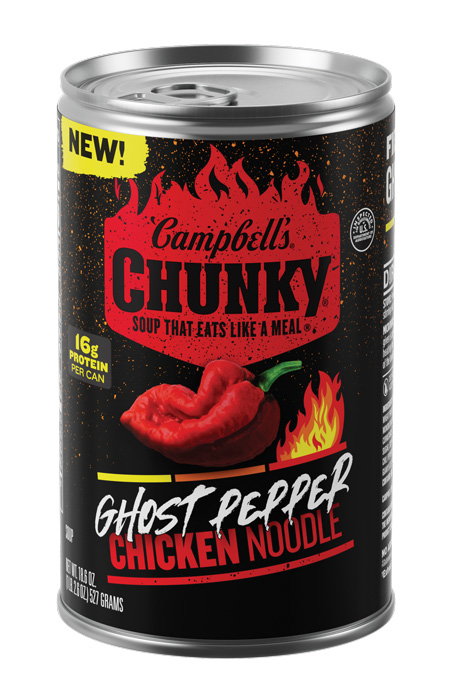


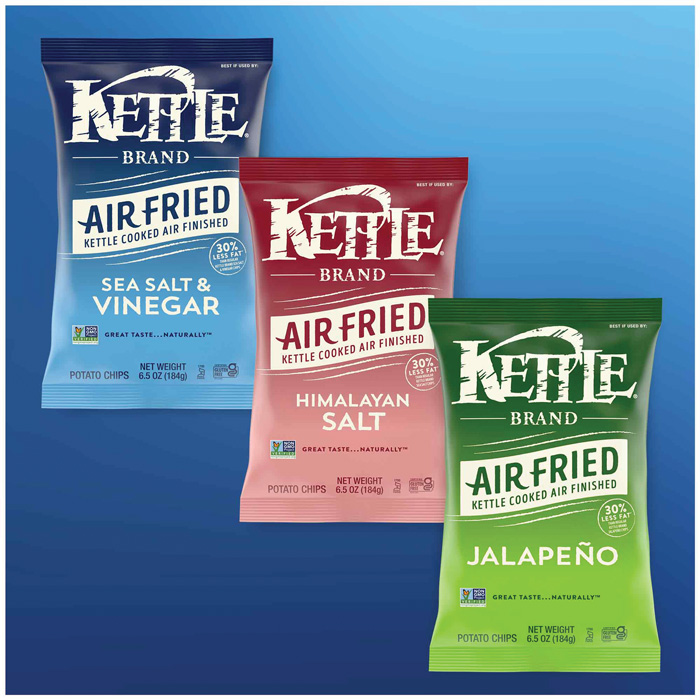

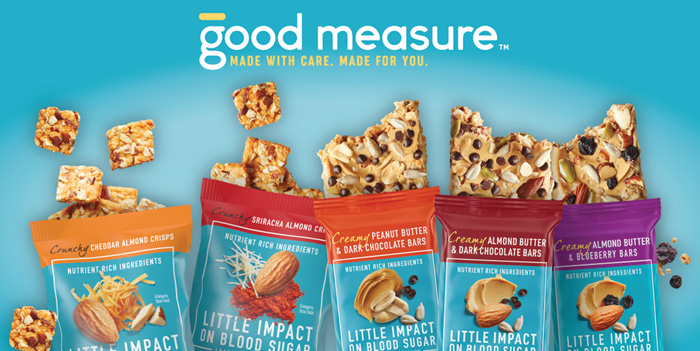






.jpg?mw=500&hash=D1E2E8B94FED0CCA2F5CEA8243FD787B)